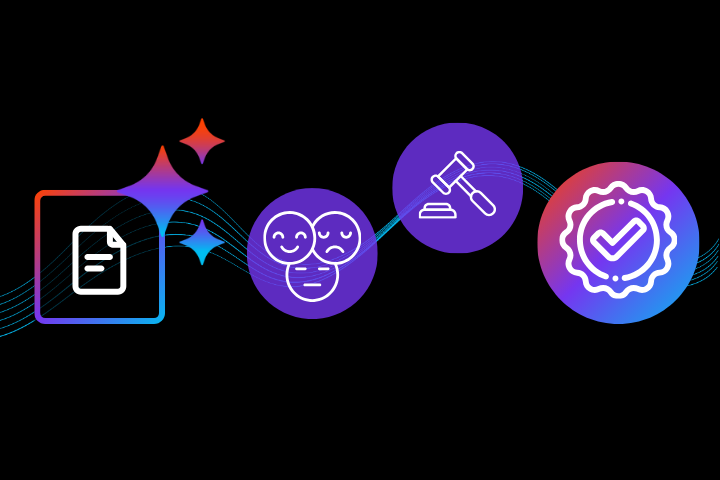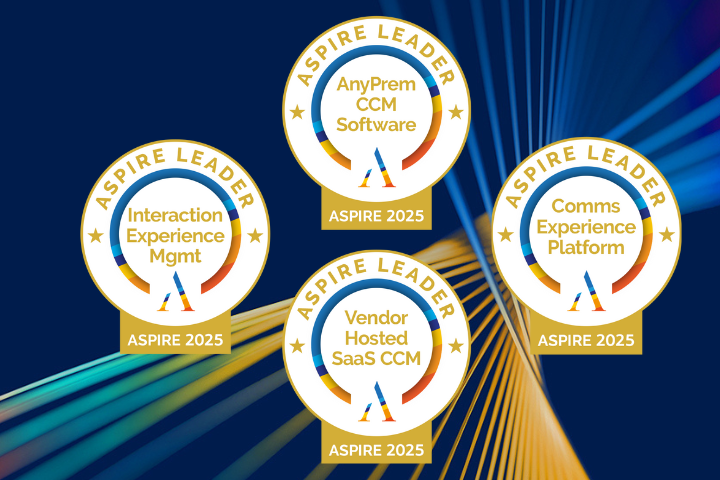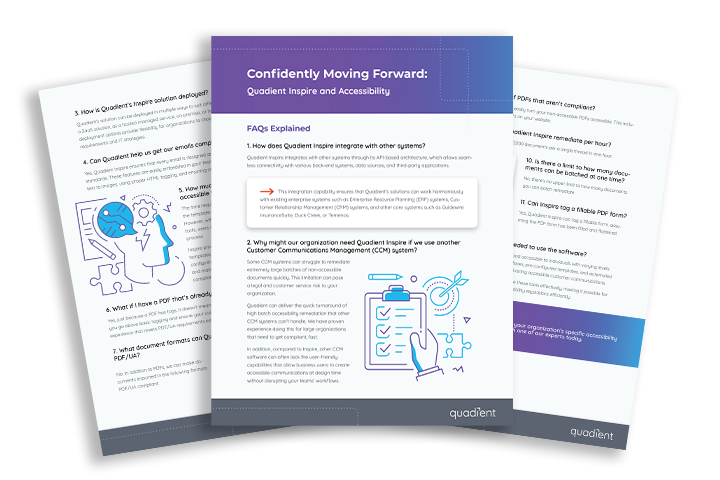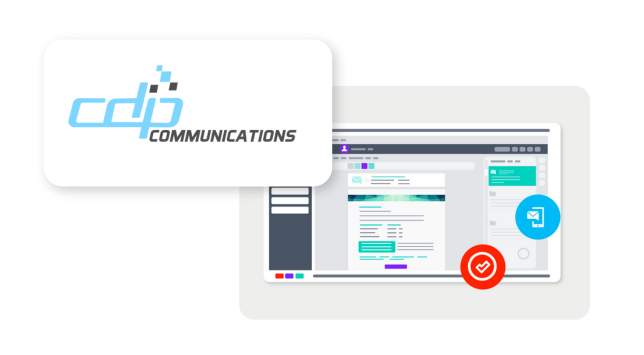
From Compliant Output to Dynamic Experiences
Businesses once viewed customer communications as operational output driven primarily by transactional processes and regulatory mandates. Reducing costs and compliance risks were the key objectives of businesses' customer communications strategy.
Today, the Customer Communications Management (CCM) software market landscape is undergoing significant change. The number one goal of businesses' customer communication strategy is now improving customer satisfaction, overtaking cost reduction. Customers now demand seamless, personalized interactions across their preferred channels and access to relevant information on demand, driving a shift in CCM priorities and desired capabilities.
"In 2024, the priority shifted from reducing CCM expenditures to enhancing the customer experience. Companies leaned into personalized and dynamic engagement by embracing AI capabilities to optimize content and deliver it through each customer's preferred channel," writes Amy Machado, Sr. Research Manager in the IDC Worldwide Customer Communications Management Software Market Shares, 2024 report (doc #US53742425).1
Tolerance for Generic, Complex Messages Grows Thin
Consumer patience for generic messages and complex communication is growing thin. A consumer research study by global market research and consulting firm, Aspire CCS, revealed that one in five consumers worldwide has switched providers in the past year due to poor communications, with five of the top six aspects that drove consumers to switch related to communications content2, including:
- Incorrect information
- Difficult to understand
- Inconsistencies
- Not empathetic or friendly
- Not relevant
Businesses that fail to modernize their communications approach and improve content quality risk losing customers and revenue to experience-led competitors, which is why customer communications are now a strategic driver of customer experience and competitive edge.
Empowering Teams to Enhance Communications
Organizations have responded to these heightened expectations by giving those closest to customers' changing behaviors and needs — such as line-of-business, marketing, and customer experience teams — a greater role in customer communications strategy. These stakeholders are shifting the focus from cost reduction to improving customer experience (CX) with superior digital interactions that engage customers on their preferred channels.
As businesses recognize communications as the foundation of an omnichannel customer experience that enhances satisfaction and loyalty, many are replacing legacy CCM systems with low-code, cloud-native solutions built to reduce IT reliance and empower business users. These solutions provide business users with the intuitive workflows and AI-powered capabilities needed to deliver highly personalized interactions at scale while maintaining compliance.
How AI-driven CCM Brings Compliance & CX into Unity
While first-movers are measurably improving their communications performance with AI-driven CCM platforms, many enterprises remain hesitant to adopt due to compliance concerns and fears that AI will reduce human authenticity, which is critical in relationship building.
If you're considering an AI-driven CCM solution, but have concerns about compliance and quality control, below are six ways market-leading solutions like Quadient Inspire automate and accelerate the creation of compliant communications that emotionally resonate.
1. Content Sentiment & Readability Tuning
Modern CCM platforms enable you to craft customer-friendly communications with AI-driven sentiment and readability analysis, combined with one-click revisions for instant adjustment. By automatically adjusting tone, reading level, and length for the given customer persona and scenario, AI seamlessly optimizes the clarity and tone of every interaction.
2. Authoring Assistance & Auto-Translation
Users of any writing skill level can rapidly create high-quality communications with guided authoring assistance that scores content against key quality metrics, highlights issues, and recommends revisions that can instantly be applied to improve messaging impact.
Authoring assistance provides a wide range of features, with automatic translations among the most valuable. By automating translations, businesses can reduce agency fees, accelerate output, and expand market reach. Communications in customers' native language also improve the customer experience and compliance with multi-language requirements.
3. Brand Compliance Content Intelligence
Next-gen CCM platforms go beyond basic LLM integration and enable you to enrich Gen AI authoring assistance with insights from popular, third-party content intelligence service providers. This allows for content analysis and recommended revisions tailored to your brand criteria.
From terminology to tone of voice, plugins to external content intelligence services can help drive content optimization aligned with your brand and style guidelines. This extended authoring assistance ensures communications are brand-compliant, strengthening consistency.
4. Comprehensive AI Governance Model
"Bring Your Own AI" integration strategies enable organizations to connect their preferred, vetted, and trained Large Language Models (LLMs) into CCM platforms. This protects sensitive data from public training and unintended exposure, while ensuring safe, consistent AI usage.
Governance is maintained through admin-controlled AI quick prompts with defined parameters, which are presented to users as a part of the native editing user experience. Quality control is further maintained with change tracking and custom approval workflows with audit trails.
5. Automated Data Compliance Checks
AI-assisted authoring enhances data security and compliance by automatically detecting Personal Identifiable Information (PII) that may accidentally be exposed in copy-and-paste scenarios. Leading CCM platforms list all potential PII issues by type and allow you to anonymize sensitive data with a single click, empowering users to increase one-to-one personalization while protecting customer data privacy and increasing digital trust.
6. Actionable Content Performance Insights
Leading-edge CCM platforms apply AI to both accelerate content creation and drive actionable performance insights for proactive improvements. By integrating AI-generated content sentiment scores into customer journey maps, modern CCM tracks how messaging impacts behaviors, engagement, and outcomes across communication touchpoints.
In addition to enriching journey insights, AI can analyze CCM content repositories to identify and consolidate similar content, reducing inconsistencies and maintenance costs. It can also run a quality analysis to generate performance reporting for insight-led improvements.
Winning in the New CCM Landscape with Gen AI
CX-led businesses are acting on the Gen AI opportunity. In an Aspire CCS survey, half of all businesses said they are currently building a Gen AI investment plan or that their plans are already underway, while 28% said they plan to address the possibility by the end of 2025.3
To maintain competitiveness, organizations must embrace AI-augmented CCM capabilities that enhance digital engagement while maintaining compliance. Learn how to develop a CX-led communications strategy that brings compliance and customer experience into seamless unity with exclusive insights from Forrester’s VP and Principal Analyst, Craig Le Clair.
Access the on-demand webinar:
Turning Regulatory Communications into Customer Experience Opportunities
Sources:
1. “IDC Worldwide Customer Communications Management Software Market Shares, 2024: Elevating Efficiency and Dynamic Experiences with AI" By: Amy Machado, September 2025, IDC #US53742425
2. Aspire Global Consumer Research: Communications, CX, and AI Insights, 2024
3. Aspire, The Future of AI in Customer Engagement, 2023








